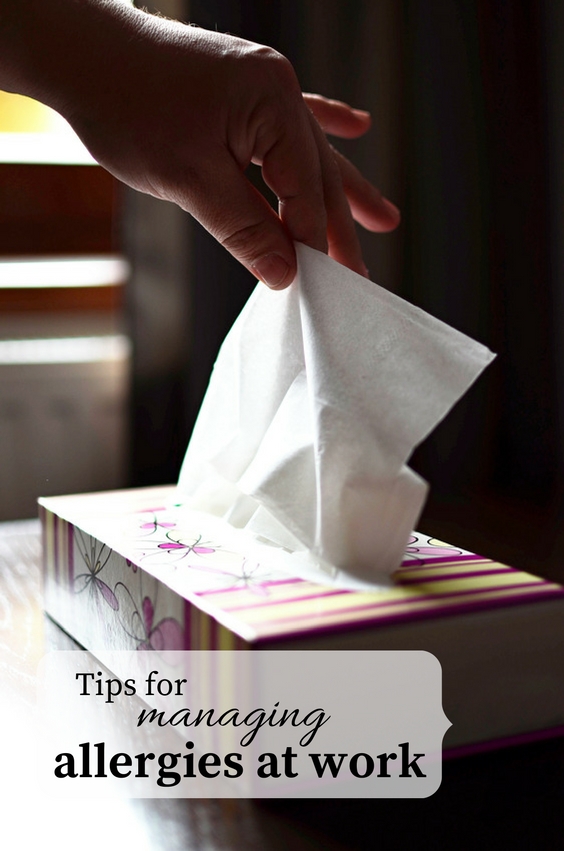Office jobs may not seem dangerous. And for most people, they usually aren’t. But for allergy sufferers, an office environment can be almost as unpleasant as a field full of ragweed.
Managers, take note: It might not seem like a big deal when some of your employees are sneezing, sniffling, and dabbing their watery eyes with tissue, but even mild allergy symptoms can put a serious damper on employee productivity.
Allergies can cause absenteeism, but they can also cause what Dr. Patrick Kunkler calls “presenteeism“: Being at work, but unable to fully perform usual job tasks because of allergy symptoms or drowsiness.
“In one study, 55 percent of employees had allergy symptoms over 50 days per year,” said Kunkler, a physician with St. Elizabeth Healthcare. “They missed about 3.5 days of work annually due to these symptoms, and they were unproductive over two hours a day when symptoms were present.”
It doesn’t take a mathematician to tell you that an employee losing two hours of work per day can cut into the company’s bottom line. That’s why smart managers do their best to provide a clean, allergen-free work environment for their employees.
Common office environment allergens include dust, mold, pollen and animal dander. Additionally, irritants like strong cleaning chemicals can trigger similar symptoms, as can perfume and cigarette smoke, although the latter is becoming less of a problem as more work sites go smoke-free.
To minimize the impact of allergens in the workplace, Kunkler recommends ensuring the office is properly ventilated, and a good filtration system that uses HEPA (high-efficiency particulate arrestance) filters. The filters should be changed regularly.
“Especially during times with high pollen counts, smog, or other irritants, the windows should be closed and air conditioning used,” Kunkler said.
Carpeted workplaces may be a bit more comfortable to walk in, but they also tend to have more allergens. Carpets should be vacuumed frequently. And in the case of water damage, it should be addressed immediately to minimize mold, Kunkler said.
Employees have to take a role in minimizing workplace allergens, as well, like hanging up their jackets or coats in a separate area from the common workspace, as coats can accumulate and carry allergens.
“Anyone with pets should use hair-removal rollers to decrease exposure to co-workers with pet allergies,” Kunkler said.
Other tips:
- Leave the pillows and stuffed animals at home. They collect allergens.
- Plants should be watered regularly, and top soil should be removed to decrease mold.
- Keep a mask handy in case there’s potential for exposure to fumes or allergens.
- If you have symptoms, keep a diary and note when they occur to determine the source of the allergy.
- Use non-sedating antihistamines like Claritin or Allegra at work.
- If symptoms persist, see a doctor.


